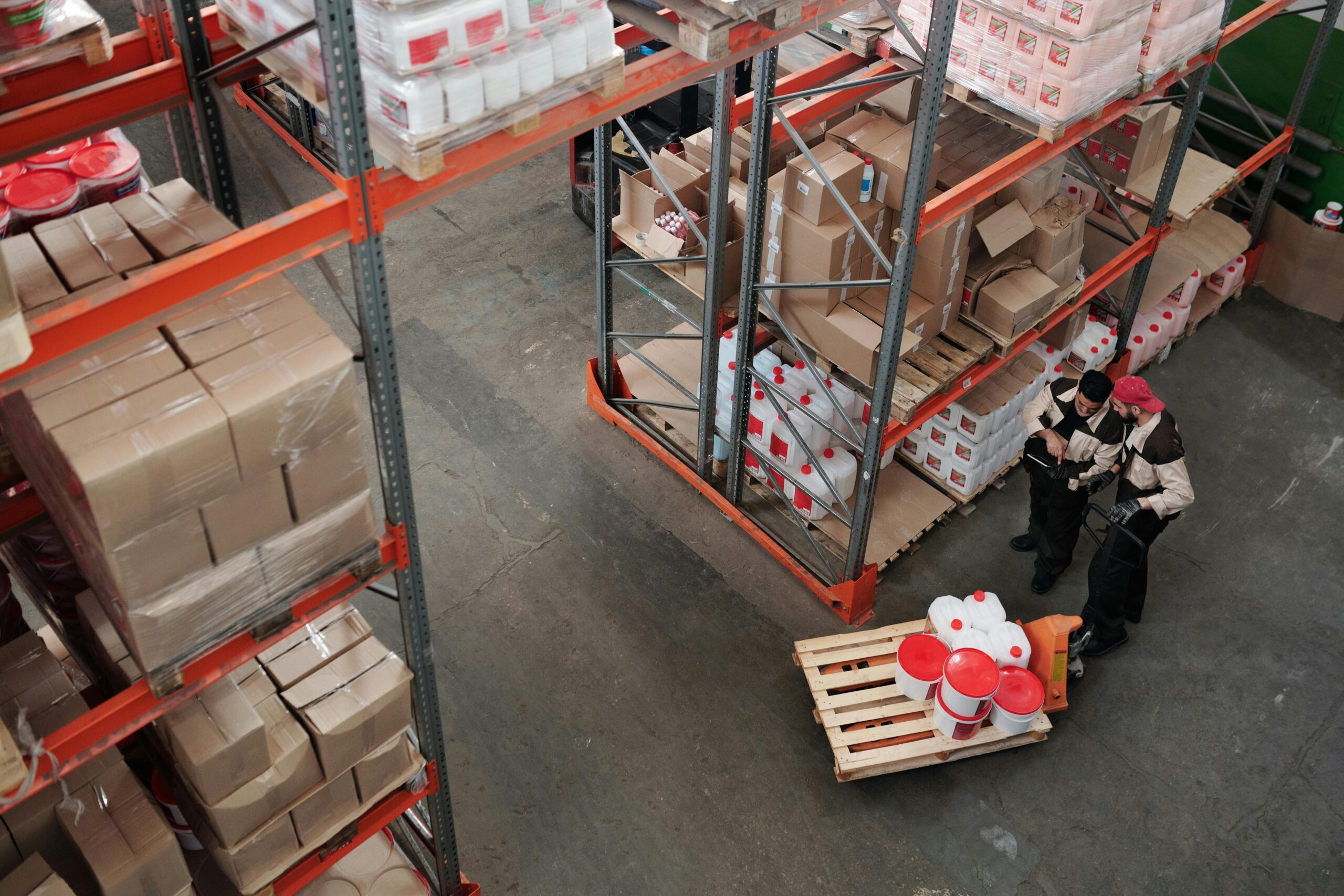Supply Chain
The importance of a strong supply chain
The need of maintaining strong supply chains was illustrated during the Covid-19 pandemic just a few years ago. Essentials like food, medications, and water may be distributed by governments and organizations with strong supply systems without experiencing significant problems. Was there a possibility? Was there deliberate preparation? Why were some organizations able to adapt while most others were unable to? Half of the solution is provided by planning and strategic adjustments; the other half is provided by the operational framework, in this case the supply chains.
As supply chain experts, we consistently advise our clients to assess their supply chains’ operational readiness using 2020 as a benchmark. They ought to reevaluate a number of relevant areas, including:
- Wide-ranging difficulties encountered during the curfews and closures
- Having trouble receiving supplies on schedule.
- Problems with distribution, delivery, and storage
- What worked and what didn’t
Is your company equipped to handle future shocks of this kind? Do you have the required operational planning in place along with the strategies? How far along is your organization’s supply chain operations planning?

What Constitutes a Sturdy and Dependable Supply Chain?
Supplier Compatibility
The supply chain’s participants are essential to the value chain as well. It is crucial for companies to monitor how well these organizations align with their operational and strategic needs. Businesses must achieve this by routinely assessing the performance and capabilities of their suppliers and vendors in relation to the requirements of the present and the readiness of the supply chain for seamless operations in the future. Planning and carrying out a methodical supplier selection procedure and conducting regular performance reviews are the answers to this problem.
Flexibility in Logistics
Logistics, which deals with moving inventory from one location to another, is a crucial part of supply chains. The supply chain halts if logistics do. Logistical movement may stall, slow down, or stop entirely for a variety of reasons. These factors could include modifications to company plans, adjustments made by logistical service providers, inclement weather, association strikes, changes in regulations, etc. Businesses can reduce the danger of being exposed to such logistical hazards by implementing the element of flexibility. The workaround is to determine the likelihood that such incidents may occur in the future, create contingency plans, and provide the required flexibility to the operations planning.
Capabilities for Storage
Whether storage facilities are owned or rented, they also have an impact on the logistical function’s success. For example, in the case that warehouse and fulfillment center space is unavailable, neither the purchasing department nor the logistics department can take any action to solve the issue if the necessary storage capabilities are not precisely determined. Planning and choices pertaining to storage capacities, such as volume, location, variety, security, and safety, are crucial for a supply chain to have strategic relevance.
Utilization of Technology: Digitization and Automation
Businesses benefit greatly from the adoption of automation and digitization tools and technology in supply chain processes. It assists in shifting human attention from monotonous and repetitive jobs to more pertinent domains like empathy and planning. Optimizing human engagement through automation and digitization also reduces the likelihood of mistakes, omissions, and slip-ups.
Transparency and easy access to process information are essential in supply chains. This calls for significant work in the form of organizing and creating guidelines and procedures that allow all relevant teams and supply chain organizations to communicate and engage with one another. This task is made simpler by supply chain processes being automated and digitalized. Each piece of data and information that enters the servers from various supply chain locations contributes to the larger software ecosystem. In this manner, all involved task owners in all processes have access to the information that must be available in nearly real-time. The availability of data for analytics is another advantage of supply chain processes being automated and digitalized.
Process Standardization in the Supply Chain
The idea and practice of maintaining the same sets of operational procedures for the same processes and operations across all business locations is known as process standardisation. For example, two warehouses or distribution centres cannot have differing quality control criteria for the same product category. As a general rule, processes within an ecosystem shouldn’t be very different, though there may be exceptions.
Supply chain process standardisation gives an organisation uniformity and consistency in how inventory and inventory-related data are handled. Below is a summary of some advantages of standardising supply chain procedures.
- Simplicity in adhering to the rules and procedures controlling supply chain activities
- supports the upkeep of brand QA and QC standards
- creates a standard framework for safe transportation, handling, and storage.
- minimise impromptu inspections and controls
- offers a standardised scale for modifying order fulfilment timelines.
Quality Control (QC) and Quality Assurance (QA)
Quality Control (QC) and Quality Assurance (QA) are essential components of supply chain operations and management. Goods must pass the specified QA and QC screens at each point in the supply chain process. That’s the model or ideal image. One of the characteristics of a good and dependable supply chain is the existence of the required QA and QC procedures at every stage. The likelihood of finding a product lot again is dependent on chance if it fails to undergo the quality check that ought to have been carried out at a particular point in the supply chain. The supply chain’s latter phases might or might not be able to identify that lot. Such incidents can be avoided with the aid of clearly established QA and QC procedures.
Clearly Defined Duties and Positions
When roles and responsibilities are clearly defined and communicated, all teams and individuals involved in a supply chain function can firmly know the standards and performance expected of them. Organizational performance and coordination among individuals, teams, and departments are greatly enhanced when roles, functions, and obligations are well understood at all levels. The attention stays on the task and the extent of disagreements is reduced. Furthermore, job descriptions are insufficient in describing an individual’s primary duties. Process definitions ought to contain these.
Operational Causes of Supply Chain Failure
Errors in the choice of suppliers and vendors
It is not appropriate for any organization to work with or be connected to suppliers who do not meet their needs. Some suppliers may not be compatible with a company enterprise, while others may be, for a variety of reasons. It could be the result of requirements that don’t match in the areas of logistics, legal, quality of products, commercial/financial concerns, etc. Businesses cannot filter and choose the best suppliers if there is no process in place. This means that choosing suppliers and vendors requires careful evaluation of the appropriate factors.
Absence of clear procedures
The absence of clear procedures for conducting supply chain activities is one of the primary causes of a declining supply chain. Businesses may execute their supply chain plans and strategies more precisely when they have clear processes (supply chain SOPs). The foundation for supply chain automation is also laid by supply chain SOPs. Businesses only realize how important it is to be process-oriented with SOPs for supply chain operations when they start considering supply chain automation. Another aspect of that realization is the changing nature of supply chain operations.
Misfit software technology
Many organizations continue to use their existing automation software for supply chain operations, according to seasoned supply chain SOP consultants. Additionally, the involved process owners are left to handle the necessary corrections and modifications. When any integrated technology fails to accurately assist an organization in meeting its operational requirements, the goal of automation is undermined. Automating larger, more complicated jobs, increasing operational accuracy, facilitating coordination, and speeding up processes are the real objectives of automation. And the additional advantages of automation and digitization are diminished if humans must step in through unforeseen means.
Roles are unclear.
As with any other company function, supply chain management requires that job descriptions, roles, and responsibilities remain clear and transparent. If this isn’t accomplished, supply chain management and operations will suffer numerous unintended consequences:
- Operations that are chaotic and slow
- Duties and duties that overlap
- Failure of the monitoring and reporting system
- Meetings that are unnecessary and preventable
- Inadequate communication of information between procedures
- Not being able to fulfill deadlines
- Probabilities of noncompliance with QA and QC requirements
Insufficient Process Documentation
There will always be uncertainty about how to carry out the procedures and operational specifics that are missing when operations are not adequately planned and recorded. This results in the expenditure of more time and money to complete tasks that could have been scheduled earlier. The following are some repercussions of supply chains lacking established processes:
Absence of a reference for operational standards and procedural specifics
Variations and errors in the outcome of the process
Poor adherence to delivery and logistics schedules
Increased demand for cross-checking and manual supervision
Longer hours of employment
Absence of Standardization in the Process
It is unorganized to use several procedures for the same task. Having to follow diverse or unclear processes for the same activity is not easy for either company associates or personnel. Customers’ purchasing experiences and journeys are also impacted. These discrepancies make it more difficult to develop a unified and consistent brand image. And the absence of uniformity or standardization in the execution of business procedures is one of the causes of this.
How TRS can assist
Assessment of the Existing Procedures and Business Methods
The capabilities of the current supply chain processes are specified and mapped. Optimizing the need for change is the primary objective in this process. Making it easier to spot process improvisations is the second objective. The process resource requirements and current business practices are outlined. Processes in their current states must be taken into consideration before improvisations and alterations are made.
Outlining the New Process Goals
Here, we specify the newly created and modified process goals. In order to integrate the new operational prerogatives and standards into the new process definitions, a thorough examination of the strategic requirements is carried out.
Analysis of Process Gaps and Creation of Future Processes
In process gap analysis, we thoroughly examine the differences between the current business practices and the processes as they are, in comparison to the recently determined process objectives and needs.
Next, our team uses Standard Operating Procedures (SOPs) to build the future processes. Writing new process definitions requires the knowledge and understanding gained from process gap analysis.

Support for Digitization and Process Automation
We provide knowledgeable and methodical support in locating and putting into practice the most appropriate supply chain automation and digitization solutions. Our team of SCM consultants examines the new procedures in light of the IT environment and offers the best options. Additionally provided are the skill sets and expertise needed to operate these software/automation systems.
Please send us a message and we will get in touch with you to discuss our supply chain SOP consulting services and how we can assist your company with supply chain SOPs.
FAQs
What characteristics distinguish a strong supply chain in the business world? How can a robust and flexible supply chain be established? What constitutes a robust supply chain?
Given below are the top 7 desirable features in a supply chain:
- Adaptability to both minor and major changes
- Adaptability in distribution and logistics
- Easy expansion or contraction of storage capacity
- Driven by digitization and automation
- Standardization and Process Documentation
- Implementing QA and QC inspections
- Clearly Defined Duties and Positions
What leads to supply chain management failure? What are the supply chain's primary issues? What issues or difficulties exist in supply chain management? What is the underlying cause or source of the supply chain crisis?
The following are the top 6 operational causes of corporate supply chain failures:
- Errors in the choice of suppliers and vendors
- Absence of clear procedures
- Misfit software technology
- Roles are unclear.
- Absence of Process Records
- Absence of Standardization in the Process





